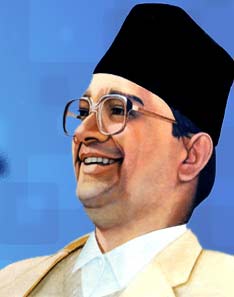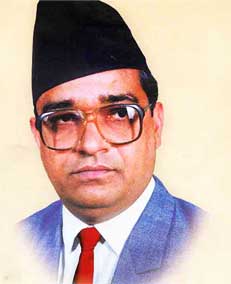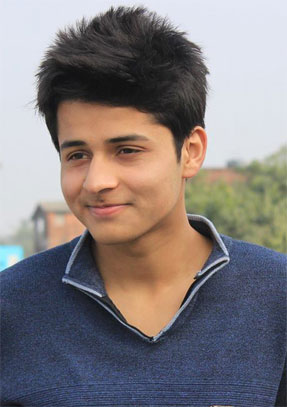Madan Bhandari (aka Madan Kumar Bhandari) was a prominent Nepali political leader belonging to the CPN (UML), a democratic communist party in Nepal. Bhandari is best known for his unflinching stance on nationalism and his ideological concept of People’s Multiparty Democracy, which advocated that communists can reach socialism or socialist goals through people’s mandate or through elections.
After the 1990’s democratic movement in Nepal, Bhandari challenged the incumbent prime minister Krishna Prasad Bhattarai in parliamentary elections from a constituency in Kathmandu and defeated him with a landslide victory. After his victory, Newsweek magazine published an interview of Bhandari with the title “Nepal Where Karl Marx Lives” apparently likening him to Karl Marx.
Madan Bhandari’s wife, Bidhya Devi Bhandari, took up active politics after his death and in 2016 became the first female president of Nepal.
Early life & education
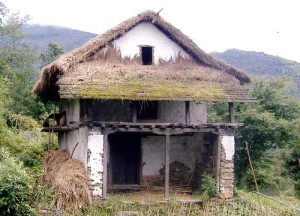
Madan Bhandari was born on 27 June 1952 in Dungesangu village of the Taplejung district in eastern Nepal. He was the second son of his parents Mr Debi Prasad Bhandari and Mrs Chandra Kumar Bhandari. His family was involved in agricultural activities and his father was a respected person in the village. Bhandari completed his primary education at his village school. His biographical accounts often describe him as a brilliant student with sharp memory power and excellent oratory skills.
In 1967 Bhandari’s family migrated from Taplejung to Itahari, Morang and Bhandari left for Mathura, India to pursue further studies. After spending two years in Mathura, Bhandari attended the Banaras Hindu University in India and graduated with a Master’s degree in literature and linguistics.
Political career
Bhandari joined the communist political movement after he met Pushpa Lal Shrestha in 1972. Pushpa Lal Shrestha was one of the founders of the Nepal Communist Party. Bhandari first worked as the Secretary of the People’s Cultural Front and starting in 1975 he became a full-time communist cadre. His innate revolutionary nature, intolerance towards injustices and deep knowledge of the socio-political conditions of Nepal are said to be the main factors that drew him towards communist ideology. His political career progressed continuously, and in 1978 he was a central committee member of the Communist Party of Nepal (Marxist-Leninist).
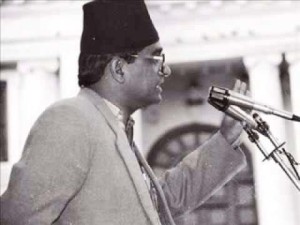
In 1982, Bhandari became the party’s politburo member and in 1989 his political career culminated when he was elected the General Secretary of the CPN ML from its fourth national congress. In 1990 democracy was restored in Nepal and Bhandari shunned his underground political life. In 1991, the two biggest communist factions in Nepal, CPN-Marxist and CPN-ML, got united and Bhandari led the party till his death.
People’s multiparty democracy & other political thoughts
Madan Bhandari’s most notable political thought which has had a deep impact on Nepal’s communist political ideology and overall communist movement is his idea of Janatako Bahudaliye Janabad, which can be translated into English as people’s multiparty democracy/republic. In his political documents, Bhandari advocated that, in the wake of the collapse of the Soviet Union, Marxist ideology had suffered a serious setback and if it is to survive it needs a reformed and constructive approach. He advocated his ideology of PMD as a ‘constructive use of Marxism’.
The core essence of Bhandari’s People’s Multiparty Democracy is that socialism or social transformation, in general, is possible without the use of overt violence like in traditional communist revolutionary movements. He advocated for a people’s peaceful revolution where justice would be borne out of the ballot, instead of the bullet. Other notable points of his ideology are the following:
- Ideas of rule of law, multiparty democracy, human rights, freedom of speech, and a fair justice system are not part of or do not exclusively belong to capitalism. They are achievements of people’s fights and socialists should preserve, take their ownership and integrate them into their broader socialist agenda.
- Like any other political party, communist parties too should get elected by the people.
- Communists can join a government or a ruling system even before a communist revolution, and such an opportunity should be used for progressive reforms and for strengthening the socialist ideological base.
Some of these ideas have suffered criticism from other communist ideologues. Some have likened his ideology to Eurocommunism and some have criticized that the idea of joining a government before a socialist revolution has given birth to corrupt communist elites in Nepal.
Madan Bhandari On Nationalism
Bhandari’s view on Nepal’s national sovereignty was regarded as very strong among his political counterparts. He openly criticized Indian and American interference in Nepal’s political affairs and his notorious car accident and subsequent death have been sometimes linked with his strong stand on Nepal’s national sovereignty.
Bhandari’s relationship with Nepal’s monarchy was troublesome. He openly and ironically challenged Nepal’s then-king Birendra to relinquish his throne and come for a political contest if he was not happy as a constitutional monarch and was interested in politics.
Madan Bhandari’s death and conspiracy theories
On 16 May 1993, Bhandari was travelling from Pokhara to Chitwan in order to attend a party meeting. His car was mysteriously plunged into the Trishuli River and among the three passengers, the two leaders Madan Bhandari and Jibraj Ashrit died, while the driver Amar Lama survived. Bhandari’s dead body was found on the Narayani river bank after three days.
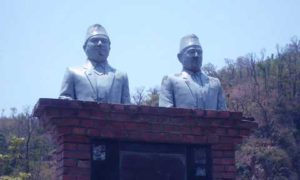
Bhandari’s death sent a shockwave throughout Nepal and is still a topic that people talk about and associate with many conspiracy theories. A majority of Nepalis do not believe Bhandari’s death to be an accident, but a political murder, carried out possibly by foreign agents/powers. Many probe and investigation committees were formed in the wake of the event, but they were unsuccessful in finding out the exact cause of the accident. Bhandari’s driver, too, was murdered after about 10 years of the accident and it further intensified the conspiracy concerns in Nepal.
Personal Life
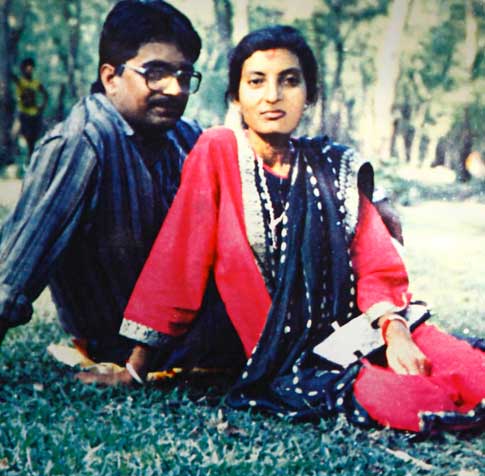
Bhandari married Bidhya Devi Bhandari, a junior political cadre of his party, in 1982. The couple has two daughters, Usha Kiran Bhandari and Nisha Kusum Bhandari. One daughter is a medical doctor and another works for the youth-wing organization of his father’s party, CPN UML. After Bhandari’s death, his wife Bidhya Devi entered into active politics and became the first woman president of Nepal. Before being elected Nepal head of state, she had taken up several ministerial posts.
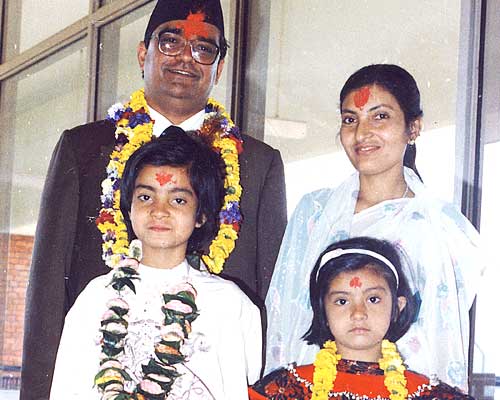
Madan Bhandari loved reading literature and riding bicycles.
Legacy & Influence
Madan Bhandari is considered an ideal political leader in Nepal and he continues to be an inspiration for many political leaders in Nepal. A movie called Dashdunga was based on events surrounding his car accident and death. Madan Bhandari Foundation, Madan Bhandari Memorial Academy, Madam Bhandari Museum and Madan Bhandari Memorial College were named in his memory.

